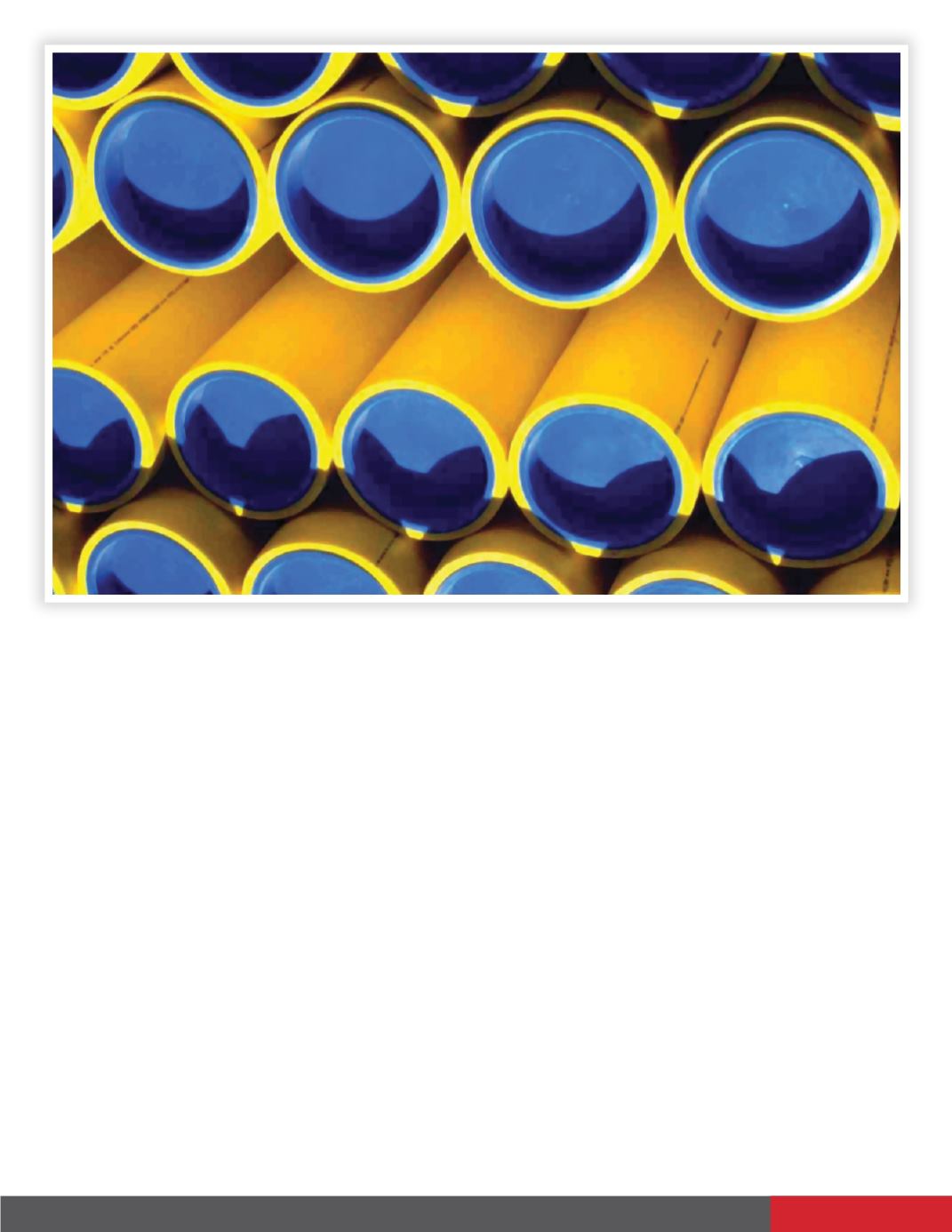
52 Business View - July 2015
plastic piping’s most eloquent cheerleaders and ad-
vocates, his role, and the role of the association he
presides over, according to the PPI website, is to in-
crease “awareness and create opportunities that ex-
pand market share and extend the use of plastics pipe
in all its many applications.”
Plastic piping is a relative newcomer to the largely un-
seen world of underground water transport. For most
of humanity’s time on the planet, wood, clay, lead, and
later on, cement, ductile iron, and copper – the so-
called “legacy materials” - have held sway, and were
the preferred resources used by plumbers, contrac-
tors, builders and municipalities for their potable wa-
ter, sewer, and waste water operations.
It was only in the 1950s that PVC (polyvinyl chloride)
piping appeared on the scene, followed by PE (poly-
ethylene) in the 1960s and, today, several more varia-
tions have arrived with differing chemical make-ups
and characteristics – PP (polypropylene), CPVC (post
chlorinated polyvinyl chloride), and cross-linked poly-
ethylene, commonly abbreviated as PEX, among oth-
ers.
So, according to Radoszewski, even though plastic
piping is lighter, less expensive, is corrosion resistant,
requires less labor for its installation, and lasts con-
siderably longer than the legacy materials, it has been
difficult to wean pipe’s end-users off of the substances
they are more familiar working with. That is why PPI’s
main objectives are to educate builders, contractors,
and municipalities about plastic piping’s advantages
and to try and get the necessary changes in local
building codes that will allow plastic to compete more
fairly with the traditional materials.
All plastic piping wants is “fair competition,” opines
MANUFACTURING


